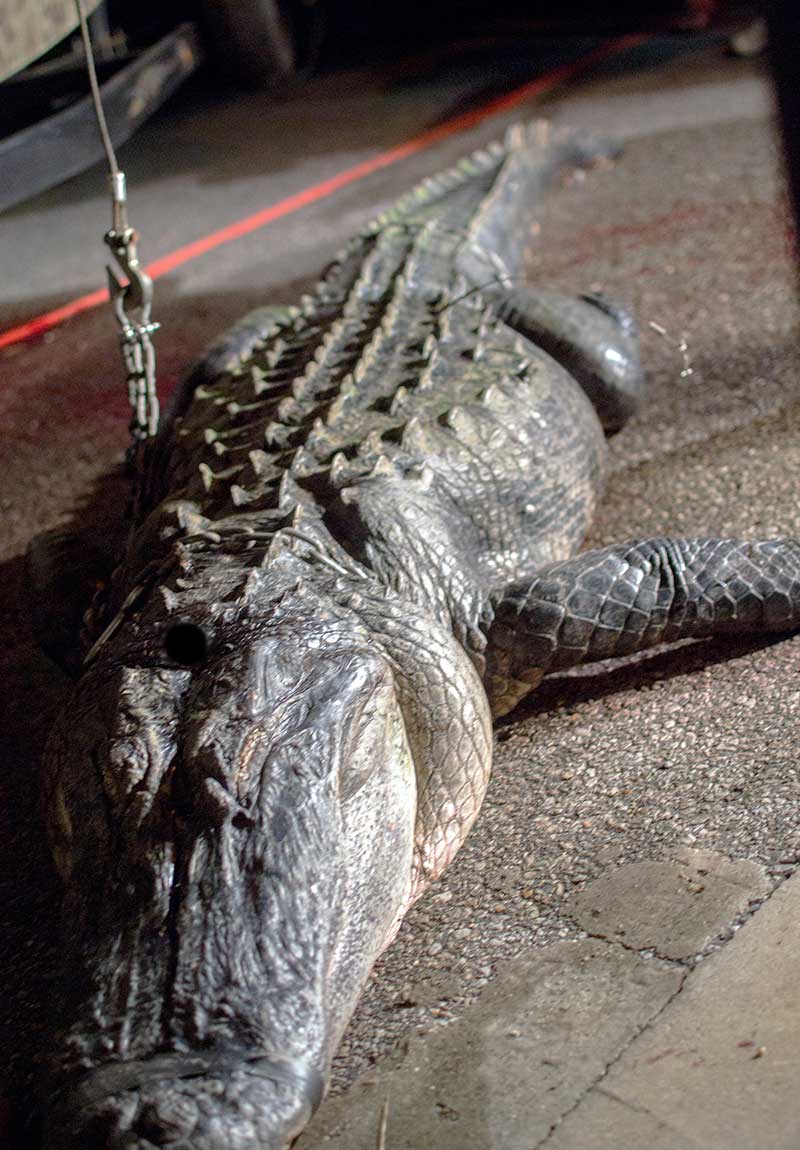
Alligators are the resident apex predators in the Mobile-Tensaw Delta and surrounding watersheds. Dauphin Island researchers are using these animals as bioindicators to provide a window into population health and overall ecosystem health.
"Alligators are very good bioindicators of ecosystem health in swamps, rivers, bayous, and marshes, because they are widespread yet have low genetic and ecological variability. They also have a clear trophic position and feeding strategy, and long generation time. All of these factors allow assessment of the long term health of a given ecosystem," Dr. Alison Robertson of the Dauphin Island Sea Lab and the University of South Alabama said.
Once an endangered species, the American alligator populations have bounced back over the past 30 years, and now thrive in many areas of the southern United States including Louisiana, Mississippi, Alabama, and Florida. The recovery of these animals was a direct result of state and federal protections, habitat preservation efforts, and reduced demand for alligator products. Since these animals are still listed as a threatened species, hunts are regulated through each state.
Each year, the Alabama Department of Conservation and Natural Resources (ADCNR) sanctions a regulated alligator hunt with a limited number of tags available (150) in our region. Participants enter into a randomized selection process and those that are successful must attend a training course on appropriate methods for catch and dispatch of the animals. All hunters in the southwest region of Alabama are required to bring their animals to the District V check-in station on the Mobile Bay Causeway. There the animals are weighed and measured by the wildlife biologists.
Dr. Robertson and Dr. Will Patterson with the Dauphin Island Sea Lab and the University of South Alabama, work collaboratively with the ADCNR biologists to collect samples from the animals with consent from the hunters. The samples allow the team to learn more about population health and connectivity. This project was initiated in Summer 2014 through pilot funding from the USA Center for Environmental Resilience, and is in its third year of sampling.
"It is extremely challenging to sample live alligators, which makes this hunt an asset to research," Robertson said.
Robertson and Patterson are extremely grateful to all of the hunters that allow for tissue and femur samples to be taken from their alligators.
"We also greatly appreciate any donations of the animal carcasses after hunters have taken what they need from the animals. This allows us to perform full necropsies of the alligators and gives us a better picture of their overall health," Robertson said. "The majority of hunters are happy to help us with this since the health of the alligators in the Delta ensures that they can hunt for years to come. We plan to share all of the information that we collect with the hunters via a publicly accessible website. Some of this data may take some time to collect such as contaminant levels etc., but it will be shared as soon as the data is available."
Robertson said approximately 85 gators were brought into the weigh station ranging from 16 to 682 pounds. The team collected 70 samples: 50 femurs for aging and 20 animals/carcasses donated for full necropsy. Necropsies were completed within just a few days of the hunt closing.
Robertson and Patterson are extremely thankful to ADCNR crew, members of the Marine Ecotoxicology Lab (Robertson Lab): Katie Baltzer, Jesse Gwinn, Grant Lockridge, Alex Leynse; and our volunteers: Caitlin Wessel, Ben Brenner, Nate Snyder, Deryn Hill, Noel Wingers, Rickey Lockridge, Erin Bohaboy, and Cy Clemo. This list will likely grow over this weekend, so we are extremely grateful for the support of all students and volunteers during the period. They are also extremely thankful to the Alabama Marine Mammal Stranding Network for allowing us to use their state-of-the-art necropsy facility during this period.